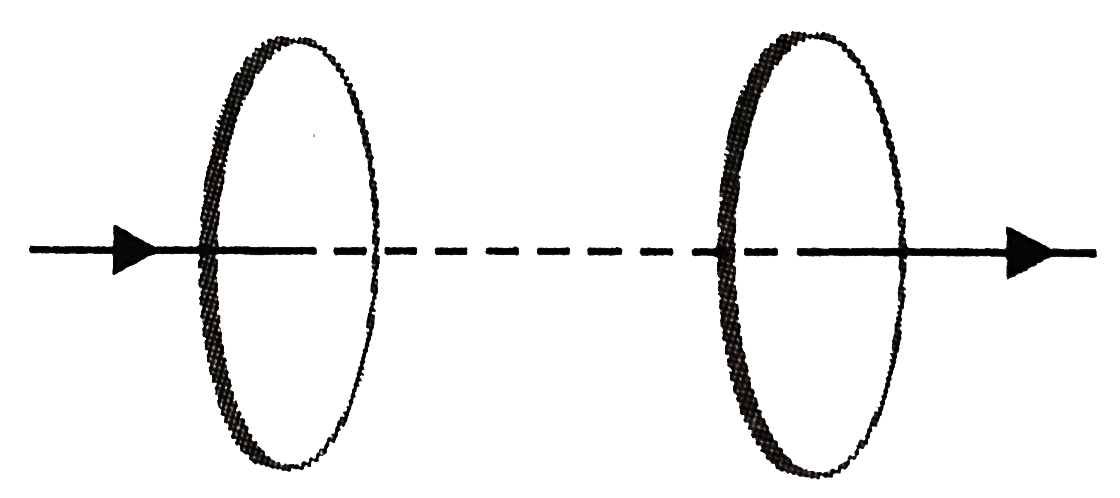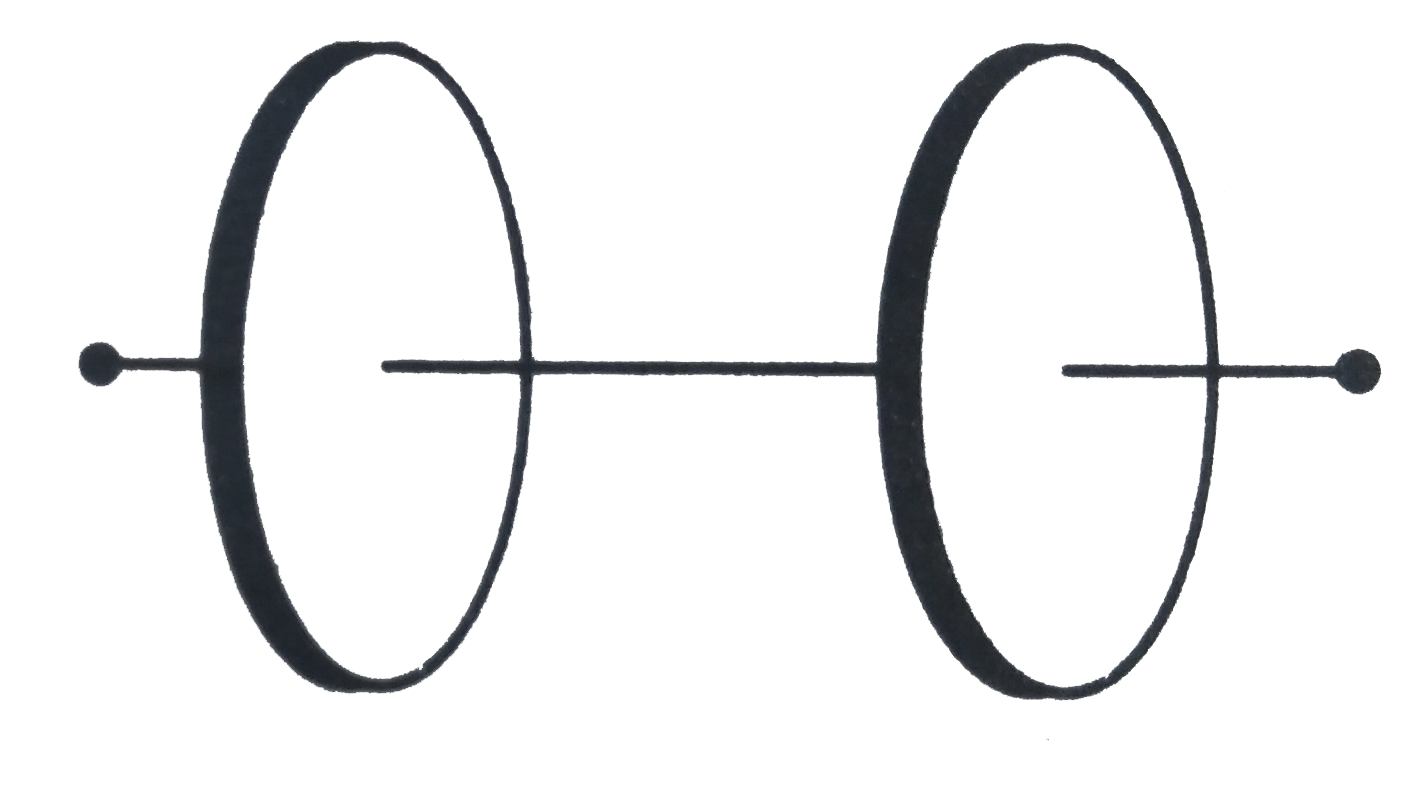A capacitor, made of two parallel plates each of plate area A and separation d, is being charged by an external ac socurce. Show that the displacement current inside the same as the current charging the capacitor.
To show that the displacement current inside a capacitor is the same as the current charging the capacitor, we can follow these steps:
Step 1: Define the Charging Current
The charging current (Ic) flowing through the capacitor can be expressed as:
Ic=dQdt
where Q is the charge on the capacitor.
Step 2: Use Maxwell's Equation for Displacement Current
According to Maxwell's equations, the displacement current (Id) between the plates of the capacitor is given by:
Id=ϵ0dΦEdt
where ΦE is the electric flux between the plates and ϵ0 is the permittivity of free space.
Step 3: Calculate Electric Flux
The electric flux ΦE can be calculated using Gauss's law:
ΦE=Qϵ0
where Q is the charge enclosed by the plates of the capacitor.
Step 4: Substitute Electric Flux into Displacement Current Equation
Substituting the expression for electric flux into the displacement current equation, we get:
Id=ϵ0ddt(Qϵ0)
Step 5: Simplify the Displacement Current Equation
Since ϵ0 is a constant, it can be factored out of the derivative:
Id=ϵ0⋅1ϵ0⋅dQdt
This simplifies to:
Id=dQdt
Step 6: Compare Charging Current and Displacement Current
Now we can compare the expressions for the charging current and the displacement current:
- Charging current: Ic=dQdt
- Displacement current: Id=dQdt
Conclusion
From the above equations, we conclude that:
Id=Ic
Thus, the displacement current inside the capacitor is equal to the current charging the capacitor.
---
The charging current (Ic) flowing through the capacitor can be expressed as:
Ic=dQdt
where Q is the charge on the capacitor.
According to Maxwell's equations, the displacement current (Id) between the plates of the capacitor is given by:
Id=ϵ0dΦEdt
where ΦE is the electric flux between the plates and ϵ0 is the permittivity of free space.
The electric flux ΦE can be calculated using Gauss's law:
ΦE=Qϵ0
where Q is the charge enclosed by the plates of the capacitor.
Substituting the expression for electric flux into the displacement current equation, we get:
Id=ϵ0ddt(Qϵ0)
Since ϵ0 is a constant, it can be factored out of the derivative:
Id=ϵ0⋅1ϵ0⋅dQdt
This simplifies to:
Id=dQdt
Now we can compare the expressions for the charging current and the displacement current:
- Charging current: Ic=dQdt
- Displacement current: Id=dQdt
From the above equations, we conclude that:
Id=Ic
Thus, the displacement current inside the capacitor is equal to the current charging the capacitor.
Topper's Solved these Questions
- BOOK - XII BOARD PREVIOUS YEAR PAPER ENGLISHCHAPTER - XII BOARDSEXERCISE - [Set- II]4videos
XII BOARDS
- BOOK - XII BOARD PREVIOUS YEAR PAPER ENGLISHCHAPTER - XII BOARDSEXERCISE - [Set-III]3videos
XII BOARDS
- BOOK - XII BOARD PREVIOUS YEAR PAPER ENGLISHCHAPTER - XII BOARDSEXERCISE - SET-III, DELHI BOARD4videos
XII BOARDS
- BOOK - XII BOARD PREVIOUS YEAR PAPER ENGLISHCHAPTER - SAMPLE PAPER 2019EXERCISE - SECTION D6videos
SAMPLE PAPER 2019
Similar Questions
Knowledge Check
- Question 1 - Select One
A capacitor made of two circular plates each of radius 12 cm and separated by 5 cm. The capacitor is being charged by an external source. The charging current is constant and equal to 0.15 A. The capacitance of the parallel plate capacitor is
 A40 pFB45 pFC70 pFD80 pF
A40 pFB45 pFC70 pFD80 pF
Imagine a light planet revolving around a very massive star in a circular orbit of radius r with direction T. On what power of r, will the square of time period depends if the gravitational force of attraction between the planet and the star is proportional to r−5/2 .
View SolutionFig. shows a capacitor made of two circular plates each of radius 12 cm and separated by 5.0mm. The capacitor is being charged by an external source (not shown in the figure). The charging current is constant and equal to 0.15A.
(a) Calculate the capacitance and the rate of change of potential difference between the plates.
(b) Obtain the displacement current across the plates.
(c) Is Kirchhoff's first rule valid at each plate of the capacitor ? Explain.
 View Solution
View SolutionFigure shows a capacitor made of two circular plates each of radius 12cm, and separated by 5.0cm. the capacitor is being charged by an external source (not shown in the figure). The charging current is constant and equal to 0.15A
(a) Calcuate the capacitance and the rate of change of potential difference between the plates
(b) Obtain the displacement current across the plates
(c) Is kirchhoff's first rule(junction rule) vaild at each plate of the capacitor ? Explain.
 .View Solution
.View SolutionFind out the capacitance of parallel plate capacitor of plate area A and plate separation d.
View SolutionThe charging current for a capacitor is 1 A, then the displacement current is
View SolutionA parallel plate capacitor, with plate area A and plate separation d, is filled with a dielectric slabe as shown. What is the capacitance of the arrangement ?
View SolutionDisplacement current is maximum during charging of capacitor. When charge on the capacitor is
View Solution

